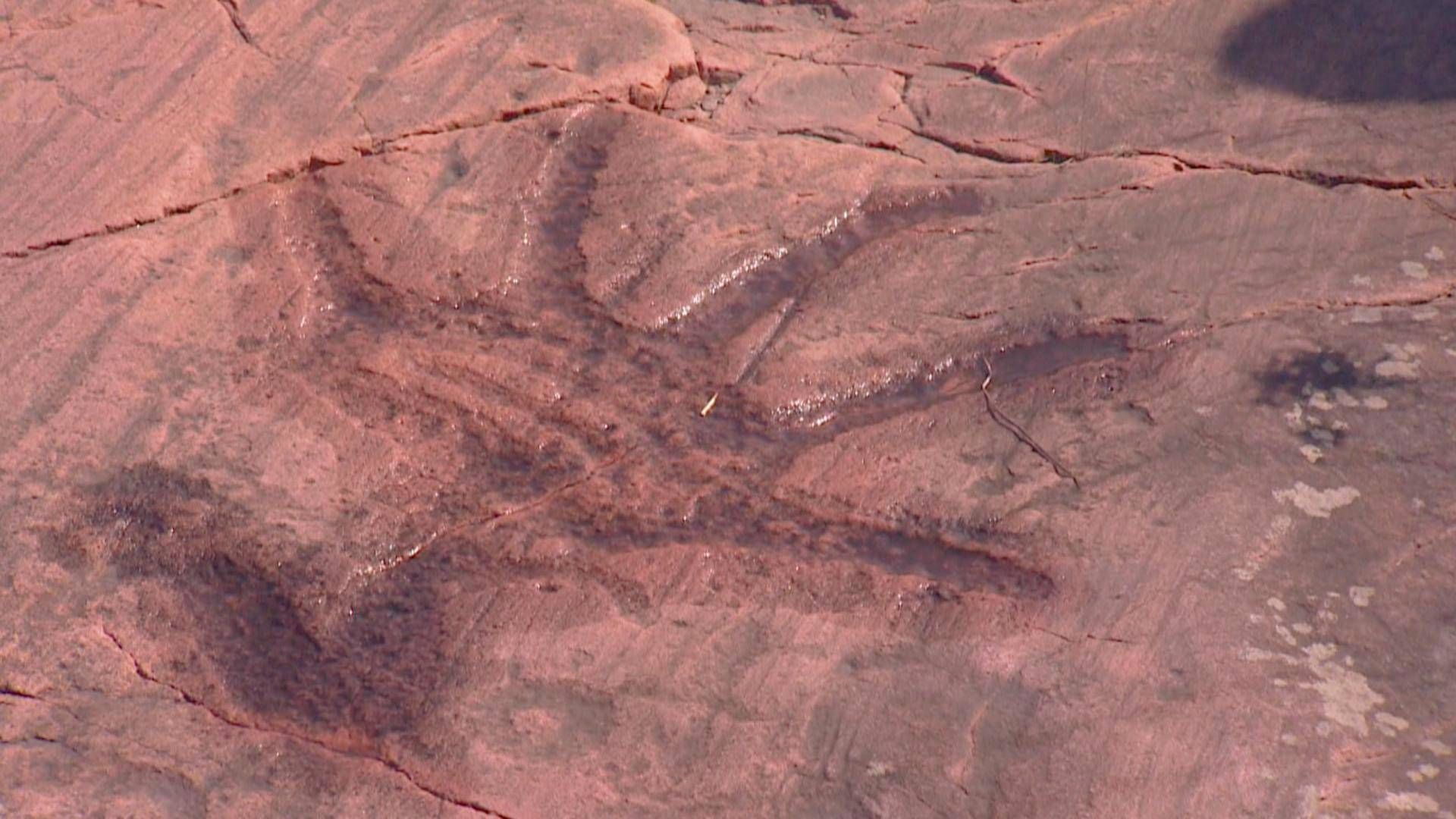Ancient Stories Rock the Imagination at Petroglyphs Historic Site
The landscape in southwestern Minnesota is expansive. The Red Rock Ridge is home to plenty of prairie, rock-related businesses and the Jeffers Petroglyphs Historic Site. Bonding money helped pay for the Visitor's Center, and the visitors on this day are lawmakers. They're here to appreciate their investments, and to learn about the rock carvings that are thousands of years old and that the state is preserving. "The Sioux quartzite rock that we're standing on is 7 on scale of hardness, where a diamond is 10 and siltstone is 1, so this is pretty tough stuff. It's not going anywhere, and that's probably the reason they left it in this rock," explains site manager David Briese.
Just a few hours from the Twin Cities, Jeffers Petroglyphs Historic Site offers visitors the opportunity to literally reach out and touch ancient history. Discover more about this extraordinary place in Mary Lahammer's first installment.
He shows us more petroglyphs, as well as many atlatls, sticks used as a form of ancient hunting technology that increase the velocity of spears when hunting large game. The targets of those ancient hunting excursions, such as bison, are depicted in the ancient drawings etched in stone. The petroglyphs also provide a documentation of everyday life and science. "On summer solstice sunrise, a beam of light drops right in between these cracks and it slowly expands outward, expands a broader story," says Briese. The stories are abundant, fascinating, powerful. One mythical creature depicted in stone lived in water and preyed upon humans - and it's sometimes known as an underwater panther.
Animals are prominent characters in the etchings, and some even have unusual features. For example, one turtle has something turtles don't normally have: horns. "We've been taught [by Native American elders] that, when you see horns, it's somebody's prayer, " Briese says. Because turtles have attributes such as longevity and regeneration - the heart will beat for 24 hours outside the body - they often represent the quality of strength.
Among the thousands of carvings, there are some classic tales of danger and love. Featured in one of the carvings is a hero often called Red Horn. The story that unfolds in the rock revolves around a group of giants that have raided a human village, kidnapping and eating the villagers along the way. The villagers seek out Red Horn's help. On his rescue mission, he notices a woman, who happens to be the chief's daughter and he falls in love with her. The chief says, "You can have her hand in marriage if you can beat me in a foot race."
At Jeffers Petroglyphs Historic Site, you can see the giant's and Red Horn's feet carved in rock. The story ends as Red Horn transforms himself into the fastest thing at the time: an arrow that shoots across the finish line and wins the girl's hand in marriage.

The final petroglyph story is set in the stars. "We know it as constellation Orion. You have to take the bottom half known as Orion's hand," Briese adds. "If you lived a good life, then you could pass through this in the Milky Way and then you could rest with your ancestors." It's a nice way to conclude the journey to the state historic site out on the prairie, one that's truly a gem of Minnesota.
This story was published November 14, 2019.
